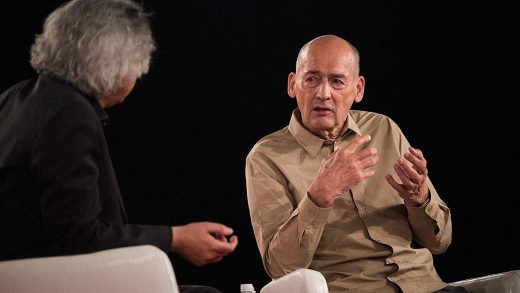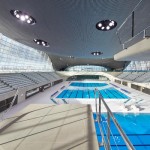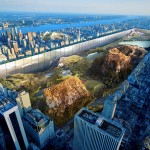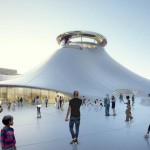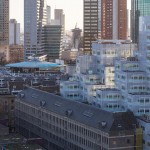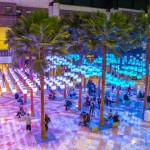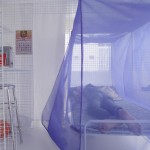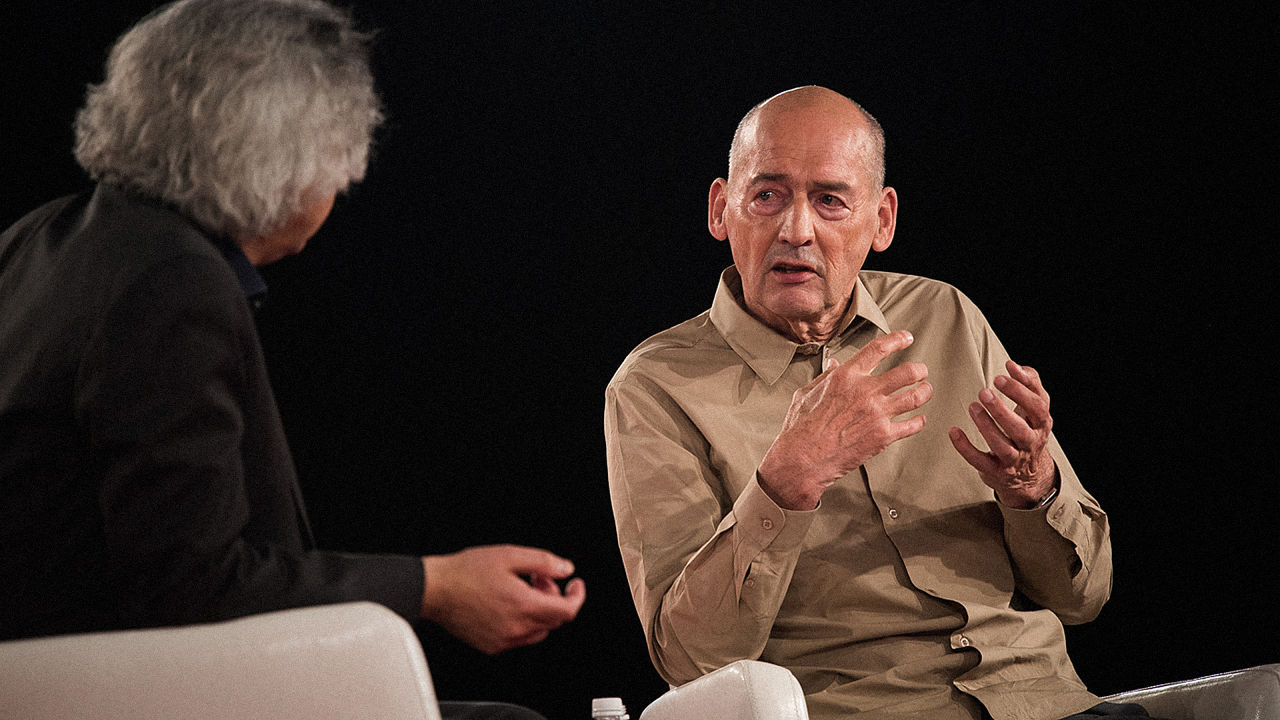Rem Koolhaas: “Architecture Has A Serious Problem Today”
Rem Koolhaas, the Pritzker Prize-winning Dutch architect, theorist, and provocateur, spoke with Mohsen Mostafavi, dean of the Harvard Graduate School of Design, in the closing keynote for the 2016 AIA convention. Koolhaas, who founded the acclaimed architecture firm OMA, candidly spoke about the profession’s shortcomings, how it could adapt to the changing social and technical climates of today, and how its rare ability to do “ballet-like stretches” holds the key to the future. Here are the key highlights:
Communication needs an overhaul.
“Architecture has a serious problem today in that people who are not alike don’t communicate. I’m actually more interested in communicating with people I disagree with than people I agree with.
“To have a certain virtuosity of interpretation of every phenomenon is crucial. We’re working in a world where so many different cultures are operating at the same time, each with their own value system. If you want to be relevant, you need to be open to an enormous multiplicity of values, interpretations, and readings. The old-fashioned Western ‘this is’ ‘that is’ is no longer tenable. We need to be intellectual and rigorous, but at the same time relativist.”
The profession needs to compensate for its slow pace.
“Architecture is a profession that takes an enormous amount of time. The least architectural effort takes at least four or five or six years, and that speed is really too slow for the revolutions that are taking place.”
Architecture’s greatest value in the future might not even be architecture.
“Architecture and the language of architecture—platform, blueprint, structure—became almost the preferred language for indicating a lot of phenomenon that we’re facing from Silicon Valley. They took over our metaphors, and it made me think that regardless of our speed, which is too slow for Silicon Valley, we can perhaps think of the modern world maybe not always in the form of buildings but in the form of knowledge or organization and structure and society that we can offer and provide.
“Architecture stands with one leg in a world that’s 3,000 years old and another leg in the 21st century. This almost ballet-like stretch makes our profession surprisingly deep. You could say that we’re the last profession that has a memory, or the last profession whose roots go back 3,000 years and still demonstrates the relevance of those long roads today. Initially, I thought we were actually misplaced to deal with the present, but what we offer the present is memory.”
Preservation is a path forward.
“We’ve tried to discover domains and areas in architecture which are not a simple vulgar multiplication of uninspired global projects. Recently, we have looked at preservation. The beautiful thing about preservation is you begin with something that already exists and therefore is already local. By definition, a preservation project is an homage to earlier cultures and mentalities to which you can add a new dimension, a new function, a new beauty or appeal. Almost every impulse signals that globalization needs rethinking or adjustment.”
A strong architectural design isn’t about architects.
“I really hate this demeaning of architecture as an icon . . . Because of the reading of architecture as icons, there’s a really unfortunate way that contributions of other partnerships and other forms of knowledge are ignored. The best work is half engineering and half architecture and therefore completely dependent on the contribution of engineers.”
Architecture becoming more socially driven is a responsibility.
“In the last 30 years, architecture has been deeply influenced by the conversion of things: Thatcher and Reagan, moving from a welfare state to a market economy. Architects used to be connected to good intentions, notionally at least. With the market economy, we’ve slowly found ourselves supporting, at best, individual ambitions and, at worst, pure profit motives. In that sense, every crisis perhaps presents an opportunity.
“In Europe, we’re facing an influx of 2 million refugees, mostly from Syria, which poses interesting possibilities. In eastern Germany, there is an area where cities are almost completely abandoned and, partly with the help of architects, there’s an experiment of seeing if Syrian refugees who are highly educated, motivated, and committed can re-inhabit those territories. Refugees could reenergize sections of the cities. They offer to architecture an interesting provocation or invitation to do good work and collaborate in interesting ways.”
Nurturing the next generation isn’t about making “Baby Rems.”
“I’m very comfortable with the idea of [my firm as a] laboratory but I’m uncomfortable with ‘mentoring.’ I should say up front that I’ve never mentored anyone. People have benefited from participating in the ongoing dialectical way our office works, but we have also benefitted from those people. It’s a fortunate byproduct . . . I accept no responsibility whatsoever [for their success after OMA].”
In the end, architecture is all about a hard day’s work.
“The beauty of architecture is that it’s a leap of faith, but a very laborious leap of faith.”
For more on Rem Koolhaas, read his interview with Gary Hustwit.
related video: Are you ready for a micro-apartment?
Fast Company , Read Full Story
(35)

